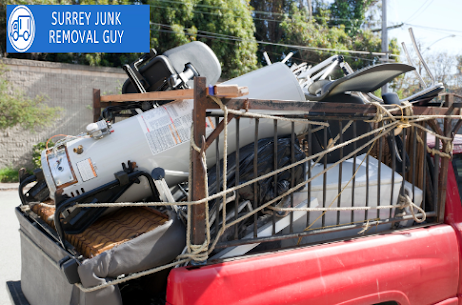Moving can be an exhilarating yet overwhelming experience, and one of the most challenging aspects is dealing with the clutter that often accumulates over time. Whether you’re upgrading to a new home or relocating across the country, managing junk removal effectively can make your move smoother and more efficient. Here’s a comprehensive guide to help you navigate junk removal during your move.
Start Early
The earlier you begin the process of sorting through your belongings, the less stressful it will be. Ideally, start decluttering at least a couple of months before your move. This allows you ample time to sift through your items, make decisions, and manage the disposal of unwanted items without feeling rushed.
Additionally, starting early gives you the flexibility to explore various junk removal options, whether it’s scheduling a professional service, renting a dumpster, or organizing a neighborhood cleanup. This can lead to cost savings and ensures that your move proceeds smoothly without the added pressure of dealing with clutter on a tight timeline.
Create a Sorting System
To streamline the process, categorize your items into three main groups: Keep: Items you want to take with you to your new home. Donate/Sell: Items in good condition that you no longer need but could be useful to others. Trash/Recycle: Items that are broken, outdated, or otherwise unsuitable for donation or resale.
By establishing a detailed sorting system, you’ll make the decluttering process more organized and less overwhelming. This structured approach will not only help you manage your belongings effectively but also streamline the overall moving process, ensuring a smoother transition to your new home. Using bins or labeled boxes for each category can help keep everything organized and make the sorting process more manageable.
Evaluate the Condition of Your Items
Assess the condition of each item as you sort. For items that are still in good condition but no longer serve a purpose for you, consider donating them to local charities, shelters, or thrift stores. Many organizations will even offer to pick up large donations from your home.
For items that are beyond repair, be sure to dispose of them responsibly. Many communities have recycling programs for electronics, batteries, and other materials that should not be thrown away with regular trash.
Host a Garage Sale or Use Online Marketplaces
If you have a significant amount of items that are in good condition and worth some money, hosting a garage sale or listing them on online marketplaces like Craigslist, Facebook Marketplace, or eBay can be a great way to earn a bit of extra cash. This not only helps you reduce the volume of items you need to move but also provides a financial boost to your moving budget.
Hire Professional Junk Removal Services
If you have large quantities of junk or need assistance with heavy lifting, hiring a professional junk removal service can be a worthwhile investment. These services handle the heavy lifting, sorting, and disposal of unwanted items, making your moving process easier. Look for companies with good reviews and transparent pricing to ensure a smooth experience.

Check with Your Moving Company
Some moving companies offer junk removal services or have partnerships with junk removal firms. It’s worth checking with your moving company to see if they provide this service or if they can recommend a reputable provider. This can save you time and potentially reduce costs if you can bundle services.
Plan for Disposal
For items that can’t be easily donated or sold, check your local waste management regulations. Some items, like hazardous materials or large furniture, may require special disposal methods. Make sure to follow your municipality’s guidelines for disposing of these items to avoid fines or environmental damage.
Recycle and Repurpose
Before tossing items, consider whether they can be recycled or repurposed. Many materials, like paper, glass, and metal, can be recycled, reducing the amount of waste that ends up in landfills. Additionally, some items can be creatively repurposed into new projects or home decor.
Document Valuable Items
If you have valuable or sentimental items that you’re planning to part with, document them with photographs or a written inventory. This can be helpful for insurance purposes or for keeping track of the items you’ve donated or sold.
Stay Organized
Throughout the process, keep a detailed inventory of what’s been sorted, donated, sold, or thrown away. This will help you stay organized and make it easier to manage the logistics of moving. An organized approach will also help you keep track of any items that might still need to be addressed as the moving day approaches.
Develop a Moving Plan
Begin with a comprehensive moving plan that includes timelines, checklists, and key milestones. A well-structured plan will help you stay on track and manage your tasks effectively. Consider creating a detailed calendar that outlines when you will tackle specific areas of your home and when you will deal with donations, sales, and trash.
Use a Checklist
Create a checklist for junk removal that outlines every step you need to take. Include tasks such as sorting items, scheduling donations or pick-ups, listing items for sale, and arranging for disposal. A checklist will help ensure that no task is overlooked and will provide a sense of accomplishment as you check off completed items.
Label and Categorize
As you sort through your belongings, use clear labels and categories to keep everything organized. For example, use color-coded bins or labels such as “Donate,” “Sell,” “Recycle,” and “Trash.” This will help you quickly identify and separate items, making it easier to process them later. Be specific with labels, especially if you have multiple boxes for donations or sales.
Document Your Items
For high-value or sentimental items, create a detailed inventory with photographs and descriptions. This can be especially useful for tracking items you plan to sell or donate. Documentation helps ensure that nothing is lost or overlooked and provides a reference in case you need to follow up with donation centers or buyers.
Create a Disposal Schedule
Plan and schedule specific times for disposing of items. This might include booking a junk removal service, scheduling a donation pick-up, or arranging drop-offs at recycling centers. By setting dates and times, you can avoid last-minute rushes and ensure that everything is taken care of in a timely manner.
Conclusion
Moving can be a stressful process, but dealing with junk removal doesn’t have to be. By following these tips—decluttering in advance, sorting items efficiently, and seeking professional help—you can streamline your move and ensure a fresh start in your new home. Remember, handling junk removal early not only simplifies the moving process but also helps you avoid the last-minute rush and extra costs.
If you’re in Surrey, BC, and need assistance with junk removal during your move, Surrey Junk Removal Guy is here to help. Our experienced team is dedicated to making your transition as smooth as possible by providing reliable, efficient, and eco-friendly junk removal services. Let us take care of the clutter so you can focus on settling into your new space.

